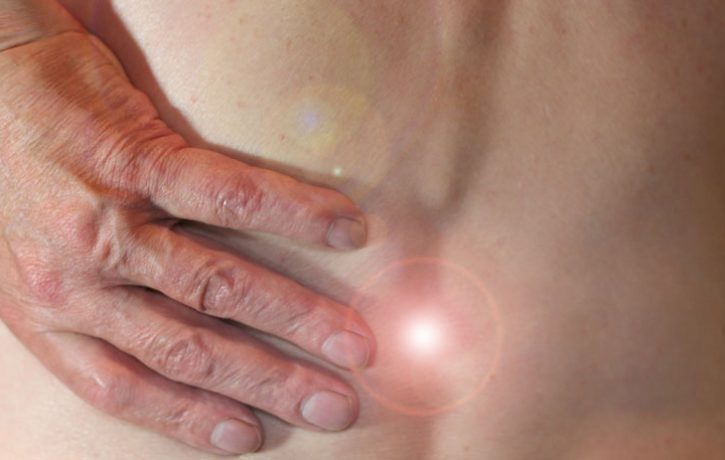in Osteopathy
Spontaneous Resorption of Disc Herniations

Disc herniations are often referred to as slipped discs. This is a horrible term as it nurtures disturbing visuals of things moving around in our spines. This is most definitely NOT the case.
Yes, I do feel quite strongly about this.
The reason I feel so strongly is that beliefs in society around lower back pain and disc health are, at best, significantly out of date and at worst just poor communication, understanding or outright lies (albeit unintentional) from the medical profession to the patients they are supposed to be caring for. This breeds misunderstanding and beliefs that we now know are harmful to the prognosis of back pain sufferers i.e. incorrect beliefs about backs inhibit recovery.
In the last few years, MRI data has demonstrated one particular belief about Lumbar disc pathology that had previously gone under the radar. Disc herniations can spontaneously resolve!
Wow!!
This is amazing news to back pain sufferers. They need not worry that surgery is the only option for their backs. The long-term outcome for those that have surgery is sketchy at best so if the evidence says that this will get better spontaneously and all that is required is some management while the patient is symptomatic, then we can expect to improve long-term outcome with the better education for those patients.
Below is a synopsis of a case study written in 2016 for the New England Journal of Medicine.
“A 29-year-old woman presented with recent onset of pain and pins and needles in her right leg. MRI of the lumbar spine revealed a lumbar disk herniation resulting in substantial spinal stenosis and nerve-root compression. She elected conservative treatment with manual therapy and an glucocortocoid injection to manage the pain.
A second MRI obtained at follow-up 5 months after presentation showed resolution of the herniation. Lumbar disk herniation has an uncertain natural history. Data from clinical trials suggest that patients who have herniated lumbar disks have similar long-term outcomes whether they undergo surgery or elect conservative management. In addition, the risk of subsequent catastrophic worsening without surgery is minimal. This patient reported that she began to have back pain after playing volleyball several years before presentation, whereas the pain and paresthesia in her leg began 6 months earlier and were not associated with a precipitating event. Her clinical symptoms resolved, and she was discharged from the clinic, with follow-up recommended as needed.”
Current evidence demonstrates that as many as 2 thirds of disc herniations spontaneously resolve without surgery within a year. On top of that, not only do many lumbar disc herniations resolve on their own, or with just a little help from conservative therapy, but evidence suggests that the more significant the herniation the more likely it is to regress: exactly the opposite of what common sense predicts!
They do not obviously go away by magic and we don’t yet know or understand why they do spontaneously resolve but it is extremely encouraging for those that would otherwise have opted for surgery due to a feeling of no other option.
Management of those presenting with lower back pain is complicated as each of us has had different beliefs about the health of our backs, but by removing some of those fears with education on the up to date reality of lower back pain and disc conditions offers the best prognosis for patients in the long term.
We know this now!
Lower back pain might be considered at epidemic levels. Statistics show that more than 80% of the population in the developed world will suffer an episode of back pain in their lifetime. This sounds a lot but in context, the episode resolves with no harmful outcome in the majority of cases. Less than 5% of cases are actually disc related and less than 1% are real nasties like fractures or cancers. That leaves the rest of those episodes as non-specific mechanical lower back pain, which in spite of the varied low to high intensity of pain reported by patients, is a completely benign condition. Now that evidence suggests that 2 thirds of the discal cases will also spontaneously resolve, it leaves relatively few cases that would require more than conservative management.
Seeking the help of someone who can help with those fears around back pain and offer advice on how much, or little movement should be used, is extremely important to improve individual prognosis. Also, advice on ways of controlling pain and getting better sleep is crucial to prevent fears around these pains increasing as well as what to do in the long term to reduce the risk of multiple episodes over a lifetime.
This article was written by Matthew Oliver M.Ost DO ND. Osteopath.
- Deepen Embodiment: Somatic Breathing with the Realization Process - 20th June 2025
- How Massage Transforms Muscle and Physical Health - 16th May 2025
- What is Traditional Chinese Medicine (TCM)? - 29th April 2025
